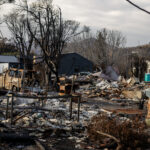Why is it easier for society to spend lots of money after a disaster rather than emphasizing preparedness before one? Julie Rochman, CEO and president of the Insurance Institute for Business and Home Safety, tackled that question in a recent interview with Insurance Journal. In these times of a warming climate and very heated politics, Rochman’s insightful answer is worth reflecting on:
Insurance Journal: As a general rule it’s much easier for government to come up with the money after the fact, after a disaster. It’s quite a lot of money. What about coming up with the money for preparedness and prevention? Why, as a society, do we have trouble with that? Why do we not see the benefits beforehand of investing in prevention?
Rochman: I lived in Washington for 25 years and there’s a saying there, I’m sure people say this in state capitols as well, that the public policy maker gets credit for filling the pothole, not for preventing the pothole. It is difficult to take credit for stopping something because proving a negative is very difficult. There are members of Congress who really like putting on the slicker and going out with FEMA and handing out checks. It’s what a lot of people will call the “Air Force One” solution, where money just rains down on a community after a disaster.
It’s very interesting. If you polled people who’ve been through a disaster, without exception, they would say they would have preferred not to go through the displacement, the trauma, the financial challenge, the loss of community ties.
People want to stay safe in their homes. They want to feel like their home is a safe place. They want their businesses to remain open.
It is really a mystery. If you look at the healthcare debate, it’s very similar, we’re very curative oriented rather than preventative.
The challenge now is with budget deficits being the way they are, there is a big conversation going on in Washington, and elsewhere, about how do we spend disaster relief dollars?
Is that really FEMA’s role? Is FEMA a preparation and prevention agency or is it a response and recovery agency?
Is the National Flood Insurance Program, a prevention organization and a safety net for property owners who really have no other choice because they have to be located in a flood-prone area or is it just a program that we just pay out money regardless of the types of flood loss prevention steps people have taken?
It’s a debate that’s probably long overdue and it’s going to seem very cruel to a lot of people who have suffered recently; they’re going to feel like the rules have changed. But it’s a very interesting dynamic because we have to put the pieces back in some places. There are economic imperatives for doing so. If we’re going to invest government dollars, or more private sector dollars for that matter, in terms of putting property back in vulnerable areas, shouldn’t we invest those dollars in making those properties stronger and safer for the next time?
If we don’t do that we’ve learned nothing and that would be a real shame.
RESOURCE
For the complete interview with Jule Rochman, CEO of IIBHS, visit InsuranceJournal.tv.
Was this article valuable?
Here are more articles you may enjoy.


 Florida Jury Returns $779M Verdict for Family of Security Guard Killed at Gambling Cafe
Florida Jury Returns $779M Verdict for Family of Security Guard Killed at Gambling Cafe  California Again Delays Wildfire Protection Rules for Homes
California Again Delays Wildfire Protection Rules for Homes  Truckers Who Fail English Tests Are Pulled Off Roads in Crackdown
Truckers Who Fail English Tests Are Pulled Off Roads in Crackdown  WTW to Acquire Newfront in Deal Worth Up to $1.3B
WTW to Acquire Newfront in Deal Worth Up to $1.3B 


